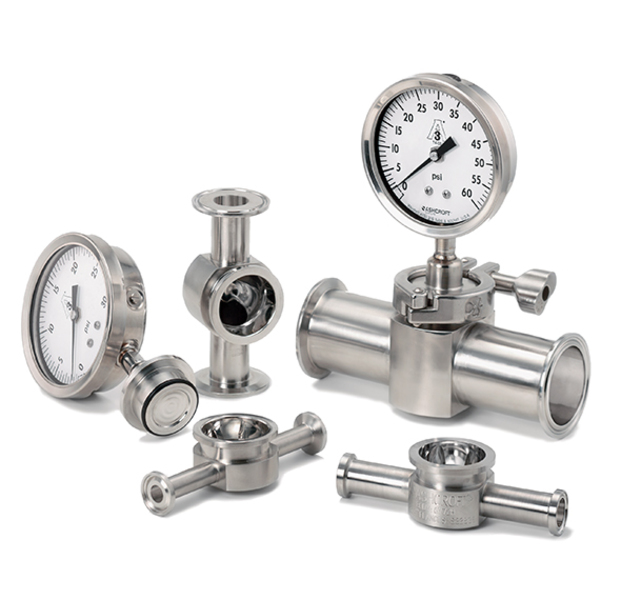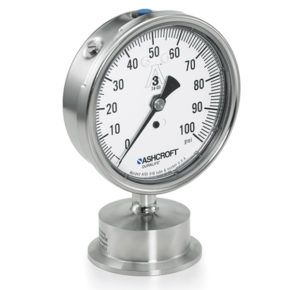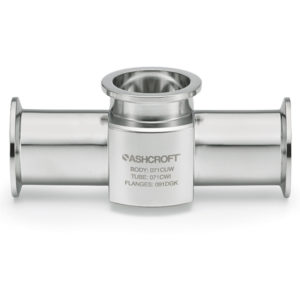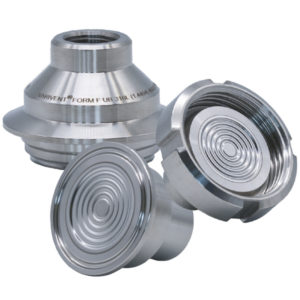

1036 Sanitary Pressure Gauge
1036 Sanitary Pressure Gauge
Data Sheets
Declaration of Conformity
Industry Brochures
Selection Guides
Product + Technical Information
- 📄 Product Information Page Zero External Adjustment SA-PI-02A 🇬🇧
- 📄 Product Information Page Polysulfone Window SA-PI-1A 🇬🇧
- 📄 Product Information Page Gauge Storage and Shelf Life ASH-PI-59 🇬🇧
- 📄 Product Information Page Artwork Submittal Requirements for Custom Dials ASH-PI-63 🇬🇧
Drawings + Models
Safety Data Sheets
Key Features
External zero adjustment (optional)
True Zero™ indication, a unique safety feature
Electropolished diaphragm and housing
Material certificates to EN 10204:2004 3.1
Clean or steam in place (CIP/SIP)
PLUS!™ Performance (optional)
Autoclave or sterilize with 3½˝ dial with polysulfone window option
Markets & Applications
Food and Beverage
Biotech
Filtration Monitoring
Pharmaceuticals
Medical Equipment
- Specifications
- Downloads
Ranges
Compound
1 ... 40 bar / 600 psi
Wetted Parts Material
Stainless steel 316L (1.4404)
Process Connection Style
1 1/2˝ Triclamp®
Ingress Protection
IP65
Accuracy
2½˝, 3½˝: All ranges over 100 psi Dry: ±1.5%, Liquid Filled or XLL: ±2.0%
2½˝, 3½˝: All ranges to 100 psi Dry: ±2%, Liquid Filled or XLL: ±2.5%
Case or Body Material
Stainless steel 304 (1.4301)
Pressure Type
Gauge pressure
Process Connection Location
Lower
Mounting
Stem
Dampening
Liquid fill
PLUS!™ Performance
Case Style
Open front case
Dial Size
3 1/2"
Data Sheets
Declaration of Conformity
Industry Brochures
Selection Guides
Product + Technical Information
- 📄 Product Information Page Zero External Adjustment SA-PI-02A 🇬🇧
- 📄 Product Information Page Polysulfone Window SA-PI-1A 🇬🇧
- 📄 Product Information Page Gauge Storage and Shelf Life ASH-PI-59 🇬🇧
- 📄 Product Information Page Artwork Submittal Requirements for Custom Dials ASH-PI-63 🇬🇧
Drawings + Models
Safety Data Sheets
- Category: Sanitary Gauges, Sanitary Diaphragm Seals












